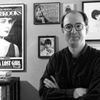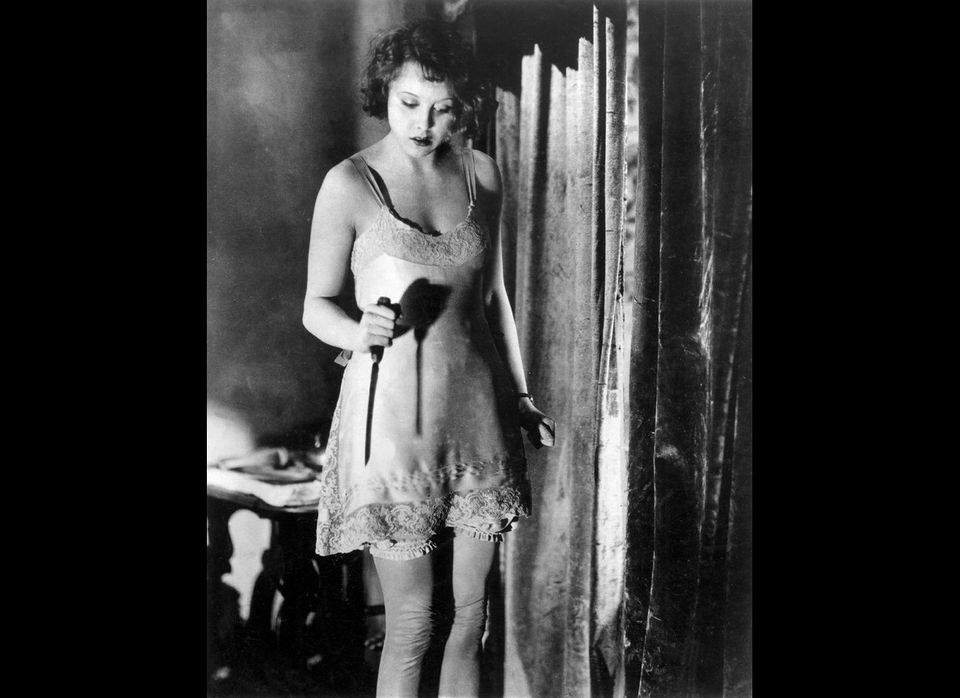Today, when we think of Alfred Hitchcock, the films that come to mind are his taut thrillers and stories of suspense from the 1940s, 1950s, and 1960s. There is Rebecca (1940), Suspicion (1941), Spellbound (1945), Rope (1948), Dial M for Murder (1954), Rear Window (1954), Vertigo (1958), North by Northwest (1959), and Psycho (1960), among others.
In a career spanning more than half a century, Hitchcock fashioned a distinct directorial style which helped redefine the movies. Above all, Hitchcock told stories visually. He employed innovative camera angles and editing techniques, and reveled in shots framed to heighten a scene's sense of trepidation. At times, his use of the camera could border on voyeurism.
Recognized as a master of suspense, many of Hitchcock's films have twist endings, and employ decoys or "MacGuffins" that serve the film's themes and allow for their examination of character psychology. Frustration, criminal behavior, muted violence, and murder run throughout, as do individuals on the run from the law alongside alluring, icy blonde women -- the latter being a Hitchcock obsession. And then there are the director's famous cameos in nearly each of his films. They serve as Hitchcock's signature.
A somewhat quiet Catholic boy from London's East End, Hitchcock (1899 - 1980) began as a production designer during the silent era. He moved up the ranks, and eventually became Britain's leading director before heading to Hollywood in 1939. Hitchcock completed ten films in England before the talkies took over. Nine of those silent films still exist.
Recently, the British Film Institute set about restoring Hitchcock's surviving silents. Missing footage was restored, and decades of damage and dirt removed in what is being described as the largest restoration project ever undertaken by the BFI, which holds some of the earliest surviving copies of the director's silent work.
These little-seen films, which have come to be known as the "Hitchcock 9," reveal the seeds of genius. They show an artist starting to work with the themes, motifs and obsessions which were the hallmark of his best movies. The "Hitchcock 9" includes the director's first completed film, The Pleasure Garden (1925), about chorus girls in London, as well as such rarities as Downhill (1927), Easy Virtue (1928), Champagne (1928), and The Farmer's Wife (1928).
The now familiar Hitchcock style is already evident in four of the films, Blackmail (1929), The Ring (1927), The Manxman (1929), and The Lodger (1927). The director himself dubbed the latter film "the first true Hitchcock picture." It also features his first cameo appearance.
Hitchcock once said, "The silent pictures were the purest form of cinema." These early works, starring the likes of handsome Ivor Novello and gorgeous Anny Ondra, shouldn't be missed.
A national tour for the "Hitchcock 9" begins at the Castro Theatre in San Francisco (June 14-16) in an event sponsored by the San Francisco Silent Film Festival. Hats off to them for debuting these historic works. The films then make their way to the Academy of Motion Picture Arts & Sciences (June 18, featuring only the silent and sound versions of Blackmail), and BAMcinématek in Brooklyn (June 29- July 5).
Additional screenings are also in the works for Washington D.C., Berkeley, Chicago, Seattle, Houston, Boston, and other American cities. Both the San Francisco and Brooklyn events will feature live music performed by the renown Colorado-based Mont Alto Motion Picture Orchestra, acclaimed British composer-pianist Stephen Horne, and other musical accompanists.
Thomas Gladysz is a Bay Area arts and entertainment writer and early film buff, as well as the director of the Louise Brooks Society, an Internet-based archive and international fan club devoted to the silent film star. Gladysz has contributed to books, organized exhibits, and introduced Brooks' films around the world.

